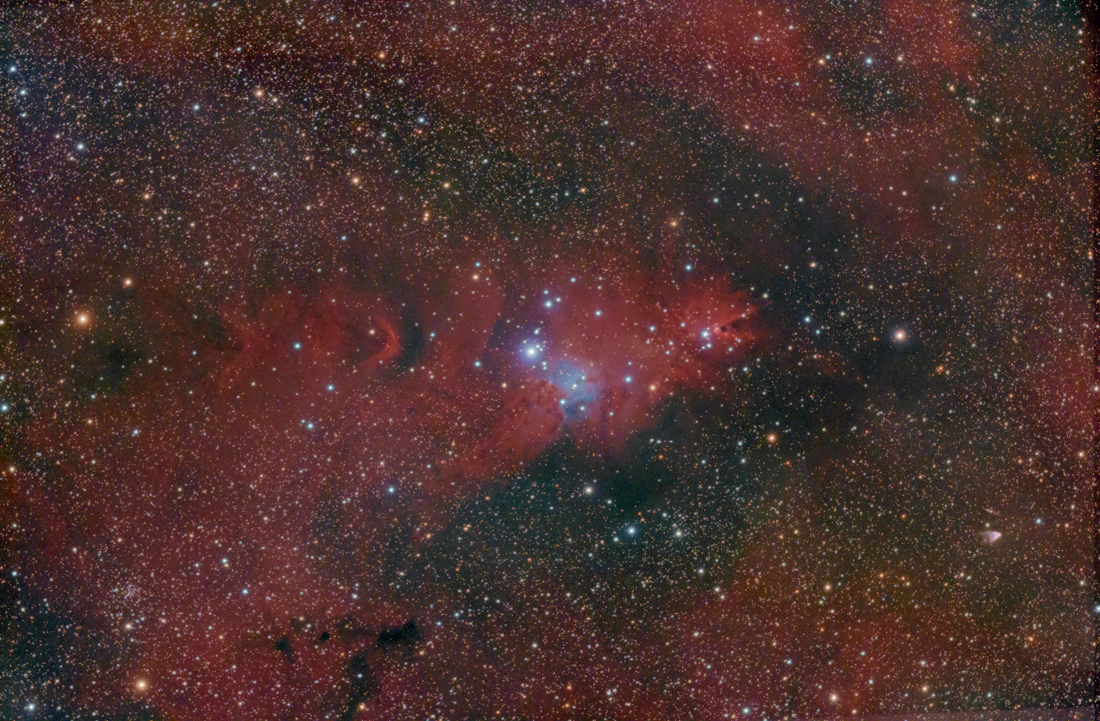The Cone Nebula is an H II region in the constellation of Monoceros. It was discovered by William Herschel on December 26, 1785. The nebula is located about 2,700 light-years away from Earth. The Cone Nebula forms part of the nebulosity surrounding the Christmas Tree Cluster. The designation of NGC 2264 refers to both objects and not the nebula alone.
The diffuse Cone Nebula, so named because of its apparent shape, lies in the southern part of NGC 2264, the northern part being the Christmas Tree Cluster. It is in the northern part of Monoceros, just north of the midpoint of a line from Procyon to Betelgeuse.
The cone's shape comes from a dark absorption nebula consisting of cold molecular hydrogen and dust in front of a faint emission nebula containing hydrogen ionized by S Monocerotis, the brightest star of NGC 2264. The faint nebula is approximately seven light-years long.
The nebula is part of a much larger star-forming complex.
To the lower right of the image NGC 2261 is visible as a small triangle (also known as Hubble's Variable Nebula or Caldwell 46)
Technical info:
TS 80mm f6 APO triplet refractor
ZWO ASI071MC Pro -10c - gain 0 -
208x 300sec
total integration: ~17hrs
Acquisition:
Astro Photography Tool
PHD2
Astrotortilla
Post Processing:
Astro Pixel Processor
Deep Sky Stacker
Iris
Photoshop CS5

